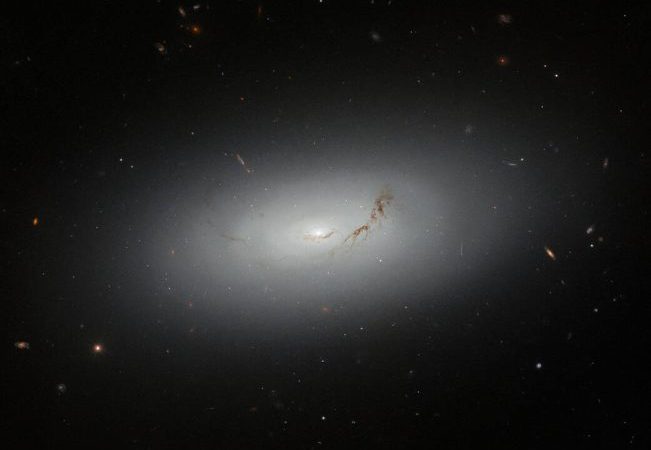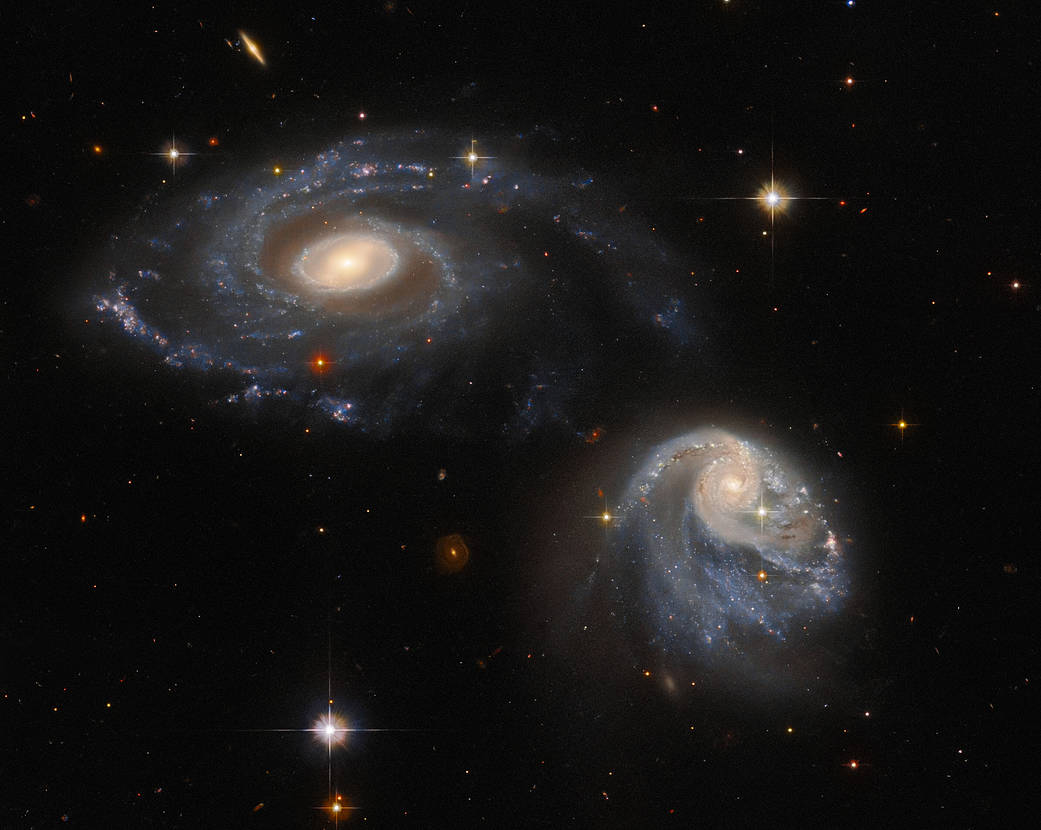NGC 3156: a spectacular Hubble-spotted dreamlike galaxy

The NASA/ESA Hubble Space Telescope has captured a stunning image of a dream-like galaxy, NGC 3156, situated in the Sextans constellation, approximately 75 million light-years from Earth.
NGC 3156 was first discovered by the eminent astronomer William Herschel on December 13, 1784. Today, it forms a celestial pair with NGC 3169.
This lenticular galaxy is a member of the NGC 3166 Group of galaxies, which, in turn, is part of the Leo II Groups – a complex web of galaxies and galaxy clusters that form a cosmic tapestry along the right edge of the Virgo Supercluster.
Observational data collected by the Hubble Space Telescope provides us with a deeper understanding of NGC 3156’s characteristics. Positioned at celestial coordinates of 10h 12m 41.246s in right ascension and +03° 07′ 45.694″ in declination, this galaxy exhibits a distinctive redshift of 0.00415, indicating a helio radial velocity of 1242 km/s.
The distance to NGC 3156 is approximately 72.67 million light-years from us. With an apparent magnitude of 12.30 in the V-band and 13.07 in the B-band, NGC 3156 may not be among the brightest gems in the night sky, but its allure lies in its unique characteristics.

NGC 3156’s classification as an S0-type galaxy – lenticular in nature – has fascinated astronomers and astrophysicists. Lenticular galaxies, named for their lens-like appearance when viewed from the side, occupy a celestial niche that straddles the realms of elliptical and spiral galaxies. They exhibit a central bulge of stars and a vast disk surrounding it, reminiscent of spirals. However, unlike spiral galaxies, lenticulars lack large-scale spiral arms, and they share with ellipticals a predominance of older stars and limited ongoing star formation.
The Hubble Space Telescope’s dream-like image of NGC 3156 reveals the galaxy’s enchanting features, with two prominent threads of dark reddish-brown dust gracefully crossing its disk. This striking feature further accentuates its unique lenticular nature. These dust lanes, reminiscent of spirals, add to NGC 3156’s visual allure and provide a canvas for astronomers to delve into its mysteries.
NGC 3156’s allure doesn’t end with its aesthetic appeal. Astronomers have probed this celestial wonder in numerous ways, from scrutinizing its cohort of globular clusters – spherical groups of stars bound together by gravity – to examining the stars caught in the gravitational grasp of its supermassive black hole. A pivotal discovery emerges from this inquiry, as Hubble data reveals that NGC 3156 exhibits a higher-than-average percentage of stars devoured by its supermassive black hole compared to its cosmic counterparts.
NGC 3156’s unique position in the cosmos, its lenticular form, and its relationship with NGC 3169 will prove helpful in unraveling the mysteries of galactic evolution.


